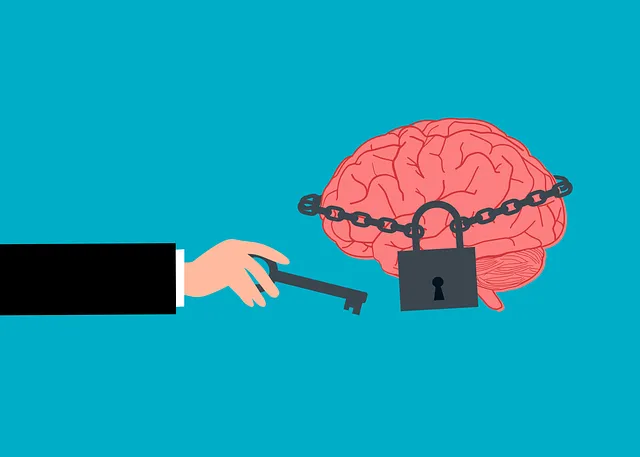Mental wellness group dynamics, facilitated by professionals, create safe spaces for sharing, support, and skill development. Techniques like active listening and structured discussions stimulate self-awareness and community building. This approach complements professional services, such as those at Kaiser's inpatient facility in Greenwood Village, enhancing overall mental health through peer insights, coping strategies, and stigma reduction. Group therapy fosters trust, mutual respect, and inclusive environments, mirroring services available at Kaiser for effective depression prevention.
Mental wellness group facilitation plays a crucial role in improving patient outcomes, especially in settings like Kaiser’s inpatient services in Greenwood Village. This article explores effective techniques for group therapy facilitation, focusing on understanding dynamic group behaviors and creating safe, supportive environments. We delve into strategies that foster meaningful interactions, enhance healing, and promote mental well-being, addressing the unique needs of individuals within these groups. By examining real-world examples, we offer insights into how healthcare providers can optimize group dynamics for better patient care.
- Understanding Mental Wellness Group Dynamics
- Kaiser's Inpatient Mental Health Services in Greenwood Village
- Effective Facilitation Techniques for Group Therapy
- Creating a Safe and Supportive Group Environment
Understanding Mental Wellness Group Dynamics

Understanding Mental wellness group dynamics is a cornerstone for effective facilitation. These groups create unique environments where individuals come together to share experiences, gain support, and develop coping skills. As a facilitator, it’s essential to foster an atmosphere of trust and mutual respect, ensuring everyone feels heard and valued. Techniques such as active listening, open-ended questions, and structured discussions promote meaningful interactions and encourage participants to engage in self-awareness exercises.
By facilitating these dynamics, group members can learn from one another, build a sense of community, and develop a toolkit of effective coping strategies. This supportive setting complements services offered by mental health professionals, such as those available at Kaiser’s inpatient mental health facility in Greenwood Village. Incorporating activities that enhance communication, resolve conflicts, and celebrate progress creates a positive and impactful group experience, ultimately contributing to the overall mental wellness of participants.
Kaiser's Inpatient Mental Health Services in Greenwood Village

Kaiser’s Inpatient Mental Health Services in Greenwood Village offer a specialized and comprehensive approach to addressing complex mental health needs. With a focus on individual care, their facility provides an environment where patients can receive intensive treatment and support. The program is designed to meet the unique requirements of each patient, offering a range of evidence-based therapies and interventions.
This inpatient setting allows for close monitoring and risk assessment (Risk Assessment for Mental Health Professionals), ensuring patient safety while facilitating progress. Through individual and group therapy sessions, patients engage in discussions that promote self-reflection and self-esteem improvement (Self-Esteem Improvement). The healthcare provider cultural competency training also plays a vital role, fostering an inclusive atmosphere where diverse perspectives are respected and understood.
Effective Facilitation Techniques for Group Therapy

Effective group therapy facilitation involves a blend of active listening, empathy, and structured guidance. Facilitators play a crucial role in creating a safe and supportive environment where participants feel comfortable sharing their experiences and emotions. Techniques such as open-ended questioning, reflective listening, and consensus building encourage active participation and foster emotional healing processes within the group. By facilitating honest discussions, these methods help members challenge negative thought patterns and reduce barriers associated with mental illness stigma reduction efforts.
Incorporating activities that promote self-reflection and group cohesion further enhances the therapeutic experience. Facilitators can utilize various tools, including art therapy or guided meditations, to engage participants in alternative emotional expression methods. This approach is particularly beneficial for individuals who may struggle to verbalize their feelings, offering them another avenue for healing and support. Moreover, by fostering a sense of community within the group, facilitators can indirectly contribute to depression prevention strategies by providing social connections and a network of peers facing similar challenges.
Creating a Safe and Supportive Group Environment

Creating a safe and supportive group environment is paramount when facilitating mental wellness sessions, especially considering the sensitive nature of the topics discussed. This begins with establishing clear boundaries and expectations from the outset. As a facilitator, it’s crucial to set ground rules that encourage active participation while ensuring every member feels heard and respected. Creating such an atmosphere fosters trust, making participants more inclined to share their experiences openly.
At Kaiser’s inpatient mental health facility in Greenwood Village, for instance, group therapy sessions focus on building a sense of community. Facilitators employ techniques like active listening, reflection, and normalizing shared struggles to create a non-judgmental space. This environment not only facilitates open dialogue but also provides a safe haven where individuals can learn from one another, gain new perspectives, and develop coping strategies tailored to their unique needs—a significant step towards enhancing overall mental wellness.
Mental wellness group facilitation plays a pivotal role in fostering recovery and connection. By understanding group dynamics, creating safe spaces, and employing effective techniques, facilitators can revolutionize care, much like Kaiser’s inpatient mental health services in Greenwood Village, which set a standard for holistic support. Incorporating these strategies ensures that individuals facing mental health challenges find solace, build resilience, and emerge with enhanced coping mechanisms, ultimately enriching their journeys towards well-being.






